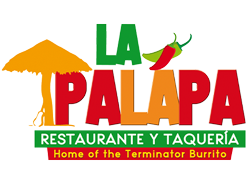Many Mexican recipes will call for fresh meat, produce, and pantry items found in practically any American supermarket. Others, however, will require a visit to a locally-owned Hispanic grocery—or at least the international aisle of a large supermarket—for one or more ingredient. This article will help introduce you to some of the foodstuffs that are common in Mexican cuisine but that perhaps are unfamiliar to you. For the best and most authentic Mexican food come to our mexican restautant La Palapa in Santa Rosa, CA.
Produce Department
You’ll find many of the same fruits and veggies at a Mexican grocery that you will anywhere else; after all, carrots, potatoes, and apples are eaten the world over. Keep an eye out for the following specific items:
- Fresh chile peppers such as poblano, jalapeño, serrano, and chilaca chiles.
- Tomatillos or Mexican green tomatoes. Only distantly related to red tomatoes, this ingredient is indispensable for making green sauce.
- Limes, especially those known as Mexican limes or key limes, which are the tart, juicy ones used to flavor and brighten a myriad of sweet and savory Mexican foods
- Chayotes, a squash native to Mexico and sometimes called cristophene, mirliton, or vegetable pear in English. Chayotes are used often in Mexican soups and stews. If you are especially lucky, you will find a grocery which also sells chayote root, a less common but no less useful ingredient.
- Jicamas. Unknown to most Americans just a dozen years ago, jicama has been gaining popularity in recent years. It´s usually eaten raw in salads, and its crisp texture and mild flavor make it practically irresistible.
- Prickly pears. These sweet, juicy fruits of the nopal cactus are a wonderful treat when eaten by themselves or as part of a fruit salad.
- Nopal cactus “leaves” or paddles, with or (hopefully) without the spines. These are delicious grilled whole or cut up and boiled for use in salads and stews.
- Large leaves of the aloe vera plant. These are used as a cosmetic/medicinal item as well as in smoothies and other health-minded preparations.
- Plaintains, which are related to bananas, but much bigger and never eaten raw. They are always cooked, steamed, or baked, and they are common to various Caribbean cuisines.
- Calabacita (Mexican squash), the longish kind that is similar to zucchini (only smaller), or the round kind. Both are light green. If you are extremely lucky, your market might have squash blossoms for sale during their very brief season.
- Fresh herbs: cilantro, epazote, hoja santa, avocado leaves
- Tropical fruits: papayas, mangos, guavas, guanabanas (soursop), pineapples, mamey
- Dried corn leaves (for making tamales)
- Dried hibiscus flowers (for making Jamaica Agua Fresca)
Packaged Groceries
- Dried chile peppers such as ancho, guajillo, chipotle, piquín, or mulatto chiles
- Canned or jarred chile peppers like pickled jalapeños whole or in slices and chipotle peppers in adobo sauce
- Drink mixes, powedered or syrup, for preparing horchata, tamarind drink, hibiscus tea, and other aguas frescas
- Jarred salsas, moles, and cooking sauces. Common brands: Herdez, La Costeña, Doña Maria, La Sierra, San Marcos, San Miguel
- Corn and flour tortillas
- Tostadas (baked or fried corn tortillas)
- Canned beans (cooked) and bagged beans (dry, uncooked) in different varieties
- Masa harina flour to use in place of fresh masa for making tortillas, tamales, and other corn-based goodies. Most common Mexican brand: Maseca
- Long grain rice, the variety almost always used by Mexican cooks
- Chicken bouillon cubes and/or powder. Common brands: Knorr, Maggi
- Bags of small pasta in different shapes (for making soup). Common brands: La Moderna, Roma, Barilla
- Fruit juices (cans or boxes). Look for mango, pineapple, or guava juices or “nectars.” Common brand: Jumex.
- Marie biscuits and other dry cookies. Common brands: Gamesa, Bimbo, La Moderna, Marinela.
- Jarred/canned cactus pieces. Common brands: La Costeña, San Marcos, Doña Maria.
- Table chocolate, which is actually cooking chocolate use for making hot chocolate, atole, mole, and other dishes. It generally is somewhat sweetened and has cinnamon in it. Common brands: Abuelita, Ibarra.
- Canned Mexican hominy (for making pozole)
- Dried herbs and spices: sticks of cinnamon, dried oregano, cumin seeds, anise, whole cloves
- Ate (concentrated fruit paste), in cans or plastic-wrapped.
- Achiote seeds and packaged adobo paste (for recipes such as cochinito pibil)
- Boxes or envelopes of mixes for making atole, gelatin desserts, soups
- Jars of vanilla extract. If you are lucky, you will find some good quality genuine Mexican vanilla concentrate. If not, you will find only cheap imitación varieties—don´t bother even looking at those.
- Piloncillo, or hard Mexican brown sugar. This may come labeled as panela, chancaca, raspadura, or tapa dulce, which are names used for this ingredient in some other Latin American countries. It may be sold in large or small cones or in roundish, somewhat flattened “loaves.”
- A variety of Mexican candy, some kinds containing powdered chile pepper.
Refrigerator and Freezer Cases
- Mexican cheeses and creams. Common brands: Cacique, Fud, Lala, Supremo, Olé,
- Mexican chorizo. Common brands: Fud, Olé, Cacique
- Mexican soft drinks in bottles or cans. Look for tamarind, guava, or other flavors of carbonated drinks, and the ever-popular non-alcoholic sangria soda. Common brands: Jarritos, Señorial, Peñafiel, Mundet
- Banana leaves for wrapping tamales like those made in Oaxaca and other southern Mexico states.
- Frozen tropical fruits, including fruit mixes such as that used to make hot holiday fruit punch.
- Fresh-rendered pork lard
Prepared food cases
- Chicharrones (pork cracklings, deep fried pork rinds)
- Carnitas (deep fried, tender chunks of pork; called chicharrones in some other Spanish-speaking countries)
- Pan dulce (sweet bread), often of several different types such as conchitas, polvorones, madgalenas, and buñuelos.


Recent Comments